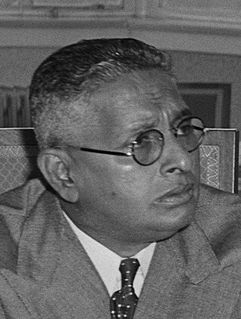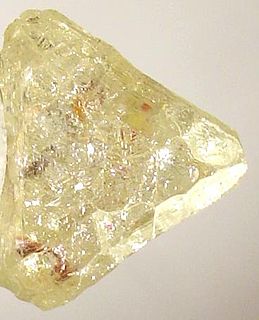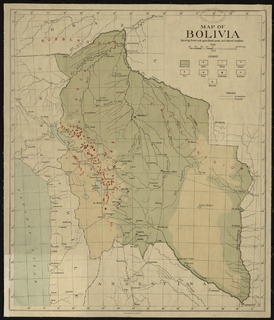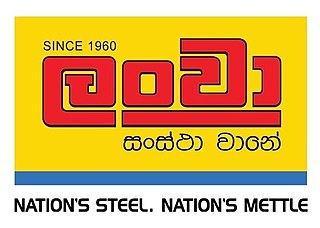Related Research Articles

Graphite is a crystalline form of the element carbon. It consists of stacked layers of graphene. Graphite occurs naturally and is the most stable form of carbon under standard conditions. Synthetic and natural graphite are consumed on large scale for uses in pencils, lubricants, and electrodes. Under high pressures and temperatures it converts to diamond. It is a weak conductor of heat and electricity.

Don Stephen Senanayake was a Ceylonese statesman. He was the first Prime Minister of Ceylon having emerged as the leader of the Sri Lankan independence movement that led to the establishment of self-rule in Ceylon. He is considered as the "Father of the Nation".

Kegalle is a large town in Sabaragamuwa Province of Sri Lanka. It is located on the Colombo–Kandy road, approximately 78 km (48 mi) from Colombo and 40 km (25 mi) from Kandy. It is the main town in the Kegalle District, which is one of two districts which comprise Sabaragamuwa Province. The town is governed by an Urban Council.

North Western Province is a province of Sri Lanka. The province consists of the districts of Kurunegala and Puttalam. Its capital is Kurunegala, which has a population of 28,571. The province is known mainly for its numerous coconut plantations. Other main towns in this province are Chilaw (24,712) and Puttalam (45,661), which are both small fishing towns. The majority of the population of Wayamba province is of Sinhalese ethnicity. There is also a substantial Sri Lankan Moor minority around Puttalam and Sri Lankan Tamils in Udappu and Munneswaram. Fishing, prawn farming and rubber tree plantations are other prominent industries of the region. The province has an area of 7,888 km2, and a population of 2,370,075.

General Sir John Lionel Kotelawala was a Sri Lankan statesman, who served as the 3rd Prime Minister of Ceylon from 1953 to 1956.

The Mining industry of Ghana accounts for 5% of the country's GDP and minerals make up 37% of total exports, of which gold contributes over 90% of the total mineral exports. Thus, the main focus of Ghana's mining and minerals development industry remains focused on gold. Ghana is Africa's largest gold producer, producing 80.5 t in 2008. Ghana is also a major producer of bauxite, manganese and diamonds. Ghana has 20 large-scale mining companies producing gold, diamonds, bauxite and manganese, and, there are also over 300 registered small scale mining groups and 90 mine support service companies.
Morgan Advanced Materials is a company which manufactures specialist products, using carbon, advanced ceramics and composites. The company is headquartered in Windsor, United Kingdom, and has 85 sites across 30 countries. A public limited company, it is listed on the London Stock Exchange and is a constituent of the FTSE 250 Index.

Mining in Bolivia has been a dominant feature of the Bolivian economy as well as Bolivian politics since 1557. Colonial era silver mining in Bolivia, particularly in Potosí, played a critical role in the Spanish Empire and the global economy. Tin mining supplanted silver by the twentieth century and the central element of Bolivian mining, and wealthy tin barons played an important role in national politics until they were marginalized by the industry's nationalization into the Bolivian Mining Corporation that followed the 1952 revolution. Bolivian miners played a critical part to the country's organized labor movement from the 1940s to the 1980s.
Justin Kotalawela, CBE, JP was a Sri Lankan businessman and Senator. He was the former Chairman of the Ceylinco Group.

Hayleys PLC was founded in 1878 and has since become one of Sri Lanka's largest multinational and diversified conglomerate. Hayleys single-handedly accounts for approximately 4.2% of Sri Lanka's export income, and 3.9% of the country's tea and 4.5% of its rubber production. With over 30,000 employees, Hayley was also the first listed entity in the country to surpass annual revenue of US$1 billion in Fiscal Year 2017/18. The company operates over 16 business sectors: eco-solutions, hand protection, purification, agriculture, consumer and retail, leisure, textile manufacturing, construction materials, plantations, industrial solutions, power and energy, transportation and logistics, BPO, tea exports, projects and engineering, and investments and services. Hayleys comprises over 130 business units and subsidiaries, nine of which are publicly listed in the Colombo Stock Exchange. In addition to Sri Lanka, Hayleys today has manufacturing facilities in Indonesia and Thailand and marketing operations in Australia, India, Bangladesh, Italy, Japan, Netherlands, UK and USA and its products are sold in 80 countries.
Mining in North Korea is important to the country's economy. North Korea is naturally abundant in metals such as magnesite, zinc, tungsten, and iron; with magnesite resources of 6 billion tonnes, particularly in the North and South Hamgyong Province and Chagang Province. However, often these cannot be mined due to the acute shortage of electricity in the country, as well as the lack of proper tools to mine these materials and an antiquated industrial base. Coal, iron ore, limestone, and magnesite deposits are larger than other mineral commodities. Mining joint ventures with other countries include China, Canada, Egypt, and South Korea.

Mudaliyar Don Spater Senanayake (1847–1907) was a Ceylonese, an entrepreneur and philanthropist. He was a successful graphite mine owner and was given the titular title of Mudaliyar for social service by the British colonial administration. He is the father of D. S. Senanayake, the first Prime Minister of Sri Lanka.
Mining is a significant contributor to the economy of Guyana, owing to sizable reserves of bauxite, gold, and diamonds. Much of these resources are found in Guyana's Hilly Sand and Clay belt, a region that makes up 20% of the country.

Ceylon Steel Corporation is one of the three industrial projects along with Ceylon Tire Corporation and Ceylon Sugar Corporation, which were established in Sri Lanka by the support of Soviet Union during the cold war era. After winning the 1960 parliamentary election, Sirimavo Bandaranayake continued with the pro-socialist vision of her late husband and further strengthen Sri Lanka's relations with socialist countries. The Ceylon Steel Corporation was started in 1962 under the supervision of Maithripala Senanayake who was the Commerce and Industrial Minister of her government. A. N. S. Kulasinghe was appointed the first director of the organisation. In 1996 the organisation was sold to Hanjung Steel, now a member of the Doosan Group of South Korea. during the period President Chandrika Bandaranayaka, who is the daughter of founder Sirimavo Bandaranayaka. In 2009 the company was acquired by the UAE based Onyx Group which owned by the Sri Lankan businessperson Nandana Lokuwithana and re-branded as "Ceylon Steel" Corporation Limited. On 2020 Lanwa Sanstha announced they plan to build massive cement corporation under the name of Lanwa Sanstha Cement Corporation. Company said, it's aim to 2.4 million tonne cement production 2021. This facility located in Mirijjawila Export Processing Zone, Hambantota. Phase 1 project estimated US$70 million
Bothale Walauwa is a large bungalow in Bothale Ihalagama, Western Province, Sri Lanka.

The Senanayake family is a Sri Lankan family that is prominent in enterprise and politics. Along with many members who have been successful politician across generations, the family includes two Prime Ministers of Sri Lanka.
Mudaliyar Don Charles Gemoris Attygalle was a Ceylonese, an entrepreneur and mine owner. He was a successful graphite mine owner and was given the titular title of Mudaliyar for social service by the British Governor of Ceylon. Through the marriage of his daughters the Senanayake family and the Jayewardene family were connected and played a major part in the Sri Lankan independence movement and in the post independence politics, foundered in part by the wealth he had accumulated.
Kahatagaha Graphite Mine is a graphite mine located in the village of Kahatagaha in Dodangaslanda in Kurunegala District, North Western Province. It is one of the largest mines in Sri Lanka. Mining started in 1872, under a British owner and was purchased by Don Charles Gemoris Attygalle. It remained in the Attygalle family after the deaths of Don Charles Gemoris Attygalle and his son Francis Dixon Attygalle and was managed by D. S. Senanayake and John Kotelawala until it was nationalised in 1972. Its production dropped after it was taken over by the state due to corruption and mismanagement. Today its managed by the government owned Kahatagaha Graphite Lanka Limited.
Bogala Graphite Mine is a graphite mine located near the village of Aruggammana in Kegalle District, Sabaragamuwa Province. It is one of the largest graphite mines in Sri Lanka, with commercial mining at this location first commencing in 1847.
References
- 1 2 3 4 Mannheimer, E. (1999). Wright, Arnold (ed.). Twentieth Century Impressions of Ceylon: Its History, People, Commerce, Industries, and Resources. Plumbago. Asian Educational Services. p. 585. ISBN 9788120613355.
- ↑ "Miscellaneous Documents: 30th Congress, 1st Session - 49th Congress". 40. United States Congress. 1884: 395.
{{cite journal}}: Cite journal requires|journal=(help) - ↑ Jayewardene, Dulip (25 September 2013). "Revival of graphite mining in Sri Lanka – A critical review". Daily Mirror . Retrieved 16 October 2019.
- ↑ Chandrasekera, Duruthu Edirimuni (17 December 2017). "Ceylon Graphite – The new gold". The Sunday Times . Retrieved 16 October 2019.
- ↑ "National Minerals Information Center". U. S. Geological Survey.